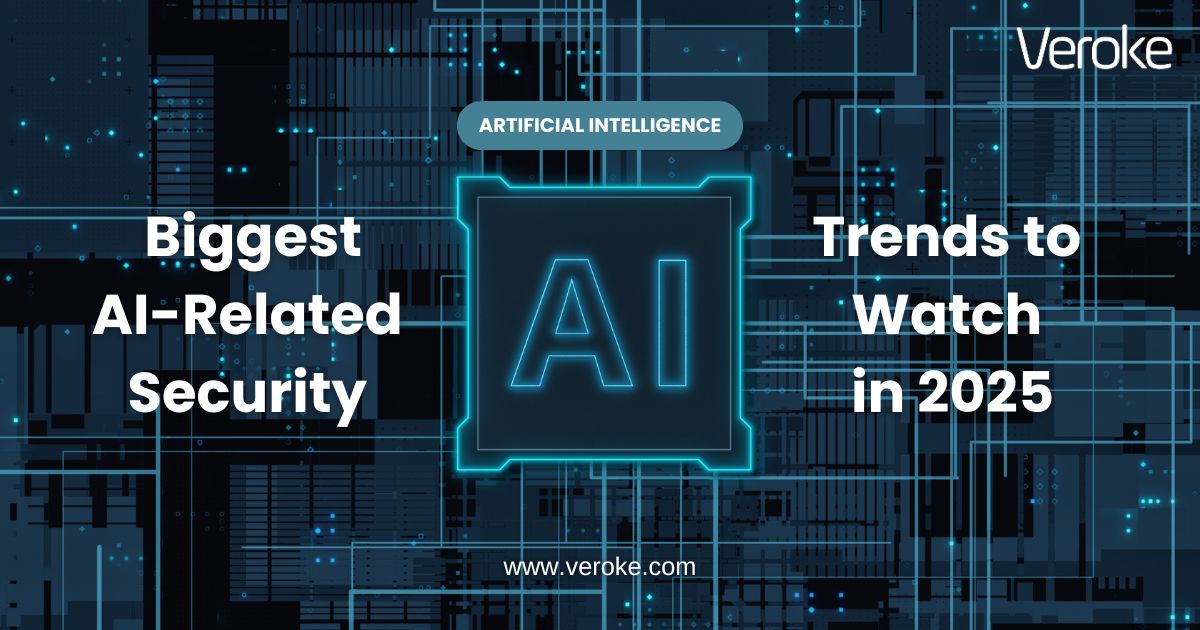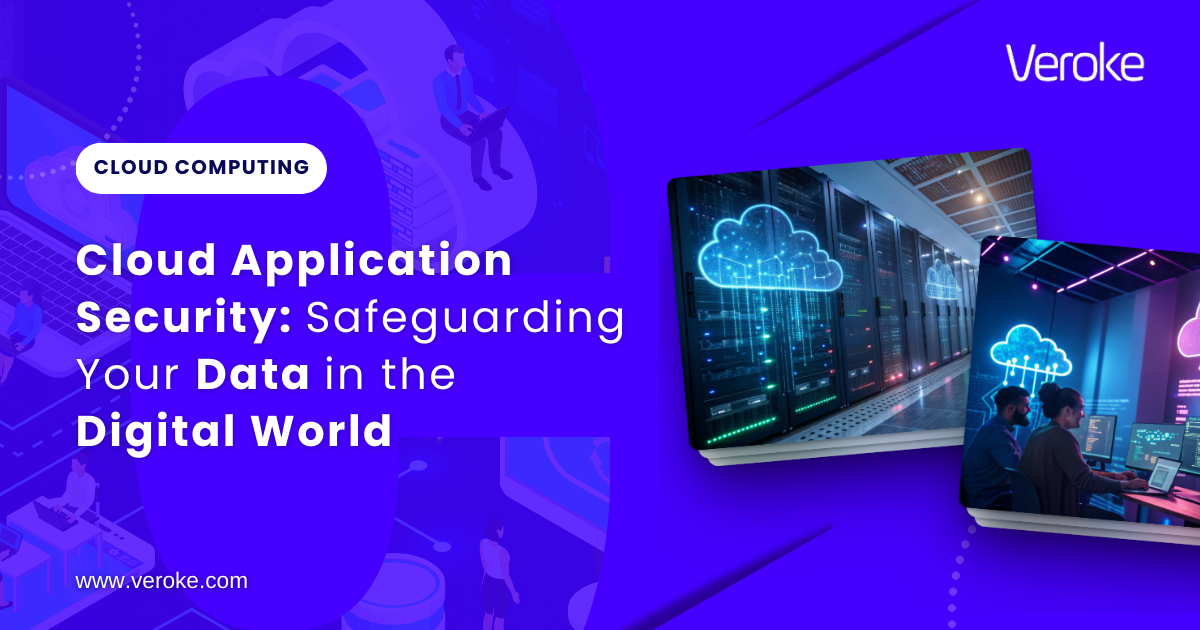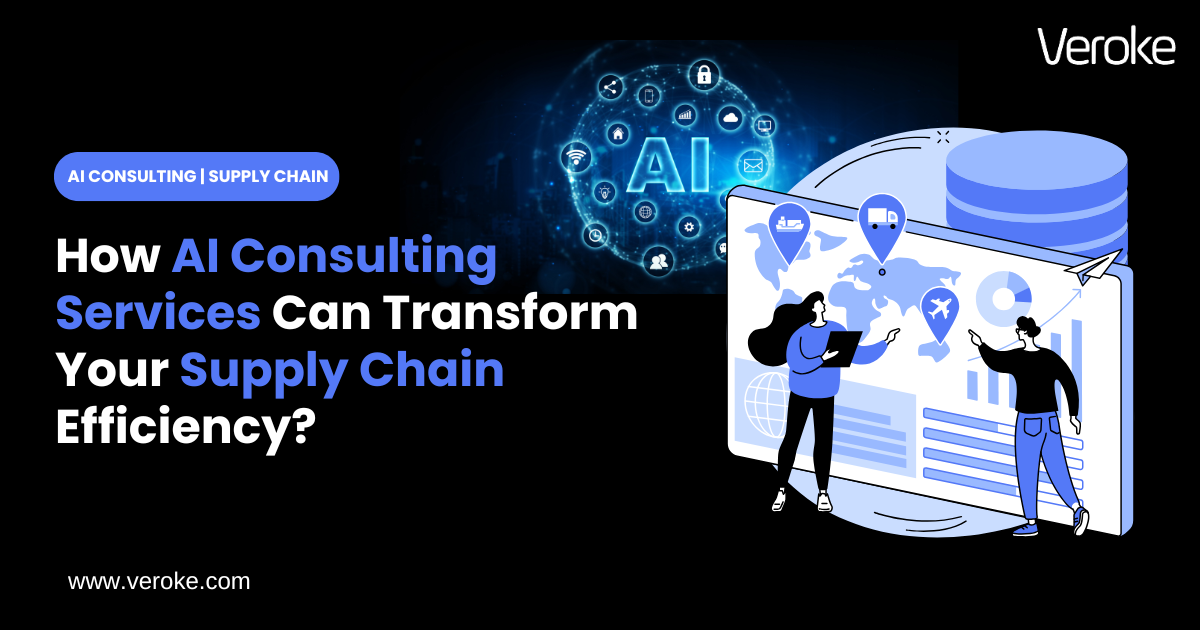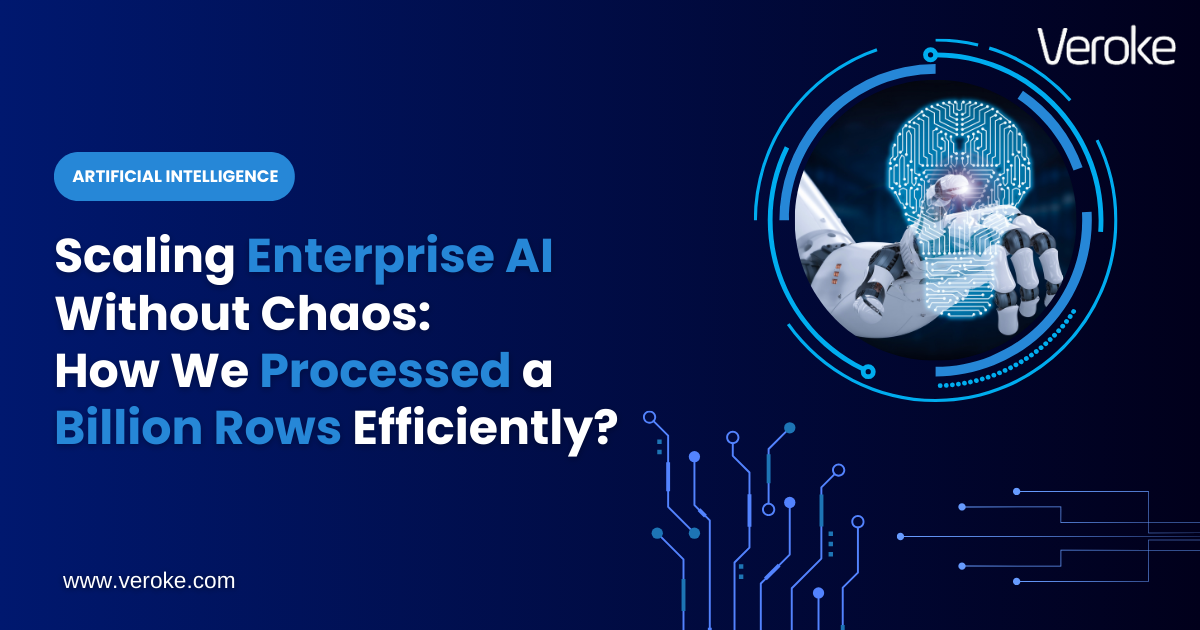Overview
Subscribe to Our Newsletter
Get expert guidance on various topics, resources, and exclusive insights
The Biggest AI-Related Security Trends to Watch in 2025
Imagine a world where cybercriminals are no longer faceless hackers lurking in the dark but highly intelligent AI systems—learning, adapting, and outpacing even the most advanced security defenses.
Sounds like a futuristic thriller, right? But this isn’t some distant sci-fi scenario; this is a reality in 2025.
AI is reshaping cybersecurity in ways we’ve never seen before, acting as both a powerful shield and a dangerous weapon. It helps security teams detect and neutralize threats almost instantly, yet at the same time, cybercriminals are leveraging AI to execute sophisticated, adaptive, and nearly undetectable attacks.
The numbers speak for themselves—97% of cybersecurity experts predict that AI-driven security threats will soon impact their organizations. This alarming trend underscores the rising risks posed by AI-powered cyberattacks.
In this blog, we’ll explore how AI is redefining cybersecurity, the latest AI-driven threats, and what businesses and individuals need to do to stay ahead. The rules of digital security are changing fast—are you ready for what’s coming?
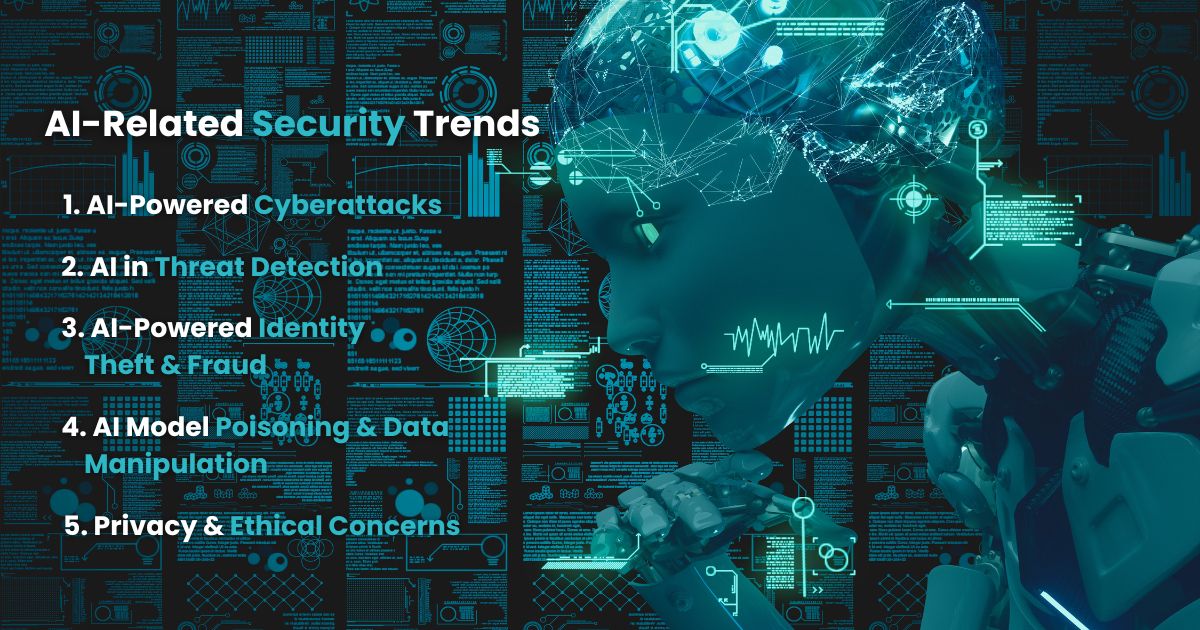
Biggest AI Related Security Trends in 2025
1. AI-Powered Cyberattacks: The Rise of Intelligent Threats.
Hackers are no longer lone wolves operating in the shadows—they now have AI as their most powerful ally. By 2025, cybercriminals will harness AI to launch automated, highly sophisticated, and nearly undetectable attacks at an unprecedented scale.
Did you know that AI-generated phishing emails can now replicate the tone and writing style of a trusted colleague? This advancement makes it harder than ever to distinguish between legitimate messages and malicious attempts to steal sensitive information.
Now, imagine deepfake technology being used to manipulate voices and videos, tricking individuals into revealing confidential data. Or malware that evolves in real-time, rewriting its code to evade detection by traditional security systems. The real challenge isn’t just preventing these attacks—it’s recognizing them before it’s too late.
To stay ahead, adopting AI-driven cybersecurity solutions is no longer optional; it’s a necessity. These advanced systems analyze vast amounts of data, detect anomalies, and identify threats before they cause damage. But technology alone isn’t enough—your vigilance and awareness remain just as critical.
Are you ready to keep up with these clever threats?
2. AI in Threat Detection: Your Digital Guardian Angel.
On the brighter side, AI is quickly emerging as our most potent friend in the battle against cybercrime. Imagine if there were systems that could anticipate, identify, and eliminate threats more quickly than any human team, reducing detection times from days to just a few seconds.
Are you prepared to see security shift from reactive to proactive? Defense systems driven by AI now examine millions of events per second, identifying irregularities in network traffic before a breach happens. In addition to reducing human mistakes, this self-learning feature makes sure you adhere to constantly changing requirements.
AI-driven fraud detection is crucial for every industry, including e-commerce, healthcare, and banking, as it reduces false positives and protects sensitive data by identifying suspicious activity in real-time.
At Veroke, we consider cybersecurity to be an important part of preventing attacks before they start. Our AI-powered solutions, which are always evolving and learning from previous threats, automate crucial security procedures.
This data-driven strategy turns security into a productive, goal-oriented procedure, allowing you to concentrate on expanding your company with confidence. So, are you ready to rely on AI as your most effective defense?
3. AI Model Poisoning & Data Manipulation: The Silent Attack.
Did you ever think about how AI systems can be compromised internally? AI model poisoning is a stealthy and highly dangerous attack in which hackers manipulate the very data that AI models are trained on, leading to biased, flawed, or even malicious decision-making.
A single hacked dataset can have disastrous effects because AI is only as trustworthy as the data it learns from. If a fraud detection system is fed tainted data, it may begin to allow fraudulent transactions to pass through while denying legitimate ones, which could result in significant financial losses.
For sectors like finance, healthcare, and autonomous driving where AI judgments affect safety and trust, this is not merely a theoretical issue; it is a serious one.
It’s crucial to thoroughly safeguard and validate your training data to ward against this quiet attack. Sensitive data can be protected by using AI model monitoring tools that identify anomalous activity and by taking differential privacy strategies into account.
In light of these hidden threats, how ready are you to ensure your AI systems remain reliable and strong?
4. Privacy & Ethical Concerns in AI Security: Who’s Watching You?
As AI’s appetite for data grows, so do concerns about privacy. Have you ever wondered how much of your personal information is being scanned, analyzed, and stored by AI-powered facial recognition, behavioral tracking, and surveillance systems?
While these technologies enhance security, they also blur the line between protection and intrusion—raising critical ethical questions about where privacy ends and surveillance begins.
One of the biggest challenges organizations face today is how to harness AI’s potential without compromising human privacy. With AI-driven security tools becoming more pervasive, companies must strike a balance between data protection and responsible AI use.
To ensure ethical AI adoption, organizations must comply with privacy regulations and implement privacy-enhancing AI models that minimize unnecessary data collection. Equally important is educating teams and users about their rights regarding data privacy, empowering them to make informed choices about how their information is used.
In a world where AI is both a safeguard and a potential risk, how prepared are you to ensure privacy isn’t just an afterthought?
5. AI-Powered Identity Theft & Fraud: Deepfakes Are Getting Too Good!
Ever wonder how simple it is to impersonate someone you trust? The rapid growth of deepfake technology, speech clones produced by AI, and real-time face-swapping are changing and making identity theft more complicated.
Imagine getting a call from someone who sounds exactly like your reliable coworker, only to discover later that it was a highly skilled artificial intelligence mimic who had deceived you into making an expensive error.
This is a real issue that has already resulted in significant financial theft and security breaches; it is not a scene from a futuristic film.It is more important than ever to remain watchful to counter these new threats.
Both individuals and organizations must implement a multi-layered protection strategy, which includes installing real-time deepfake detection technologies, integrating biometric authentication with advanced AI fraud detection, and regularly training personnel on the risks of AI-based impersonation fraud.
So, are you prepared to improve your security measures in the new age of digital trickery?
Final Thoughts: The Future of AI and Security
In the field of cybersecurity, artificial intelligence is both a strong ally and a dangerous foe. Adopting advanced AI-driven security solutions and remaining vigilant are essential for staying ahead of attackers’ rising expertise.
Identity fraud, model poisoning, privacy issues, and AI-powered cyberattacks present formidable obstacles, but so do the chances to protect against them with the same technology.
While identity fraud, model poisoning, privacy breaches, and AI-powered cyberattacks pose serious challenges, the same technology offers powerful solutions to counter these threats. The key lies in how well businesses and individuals integrate AI into their defense strategies.
Staying ahead of cybercriminals requires more than just awareness—it demands proactive measures, AI-driven security solutions, and constant vigilance. The degree to which companies and individuals can successfully incorporate AI into their defensive plans will determine the direction of cybersecurity in the future.
The question is not if AI will affect cybersecurity, but rather how equipped you are to deal with it.
At Veroke, we are committed to helping businesses fortify their digital security with cutting-edge AI-powered solutions. So, are you ready to stay ahead of the threats? Get in touch today, and let’s build a safer digital future together.
FAQs
1. What is the future of cybersecurity with AI?
Although the application of AI in cybersecurity is still in its infancy, it is certain to develop and advance more in the years to come. AI systems made to identify and stop even the most intricate cyberattacks will advance in sophistication along with cybercriminals.
2. What is the latest development in cybersecurity AI?
One of the newest developments in AI for cybersecurity is autonomous threat detection, which uses sophisticated AI algorithms to identify and eliminate online threats instantly.
3. How AI is changing security?
AI improves security by automating repetitive activities, offering real-time analysis, and having predictive capabilities. AI-powered security solutions enable IT professionals and security specialists to better safeguard their companies and optimize security processes.
Transform your Ideas into a Digital Reality
Get customized bespoke
solutions for your business.
